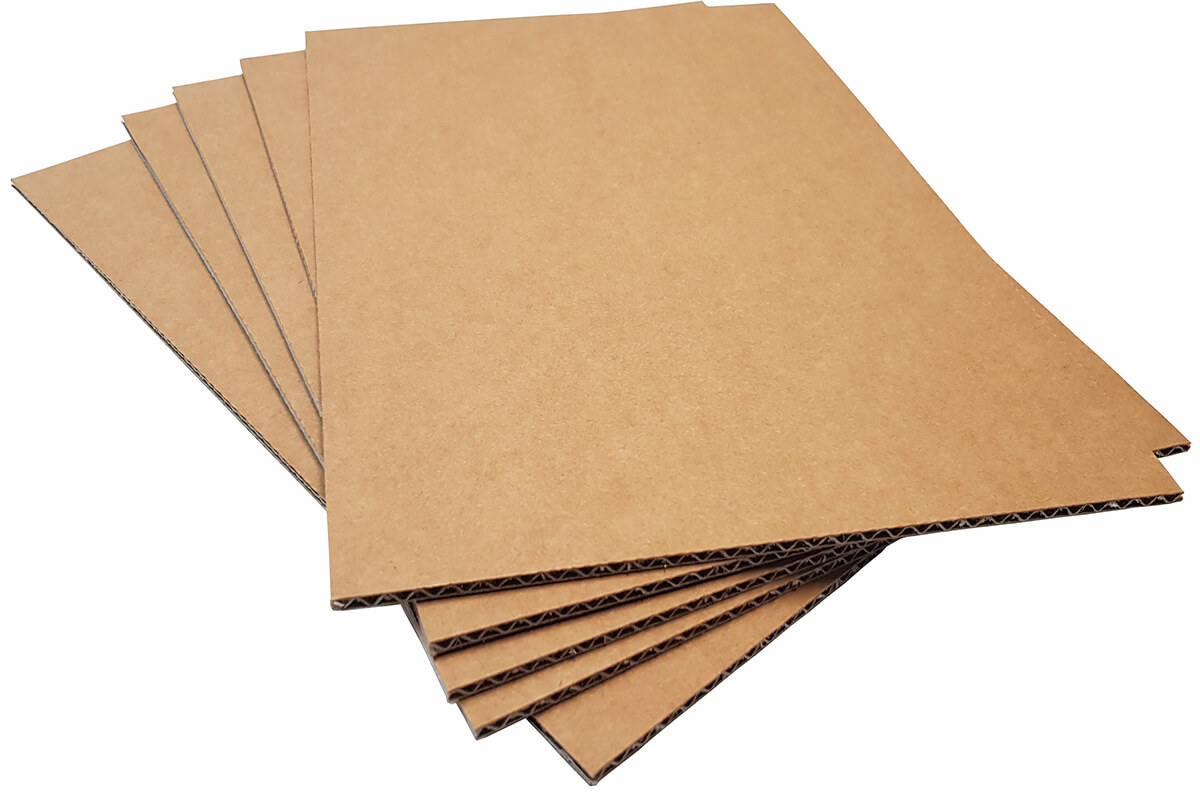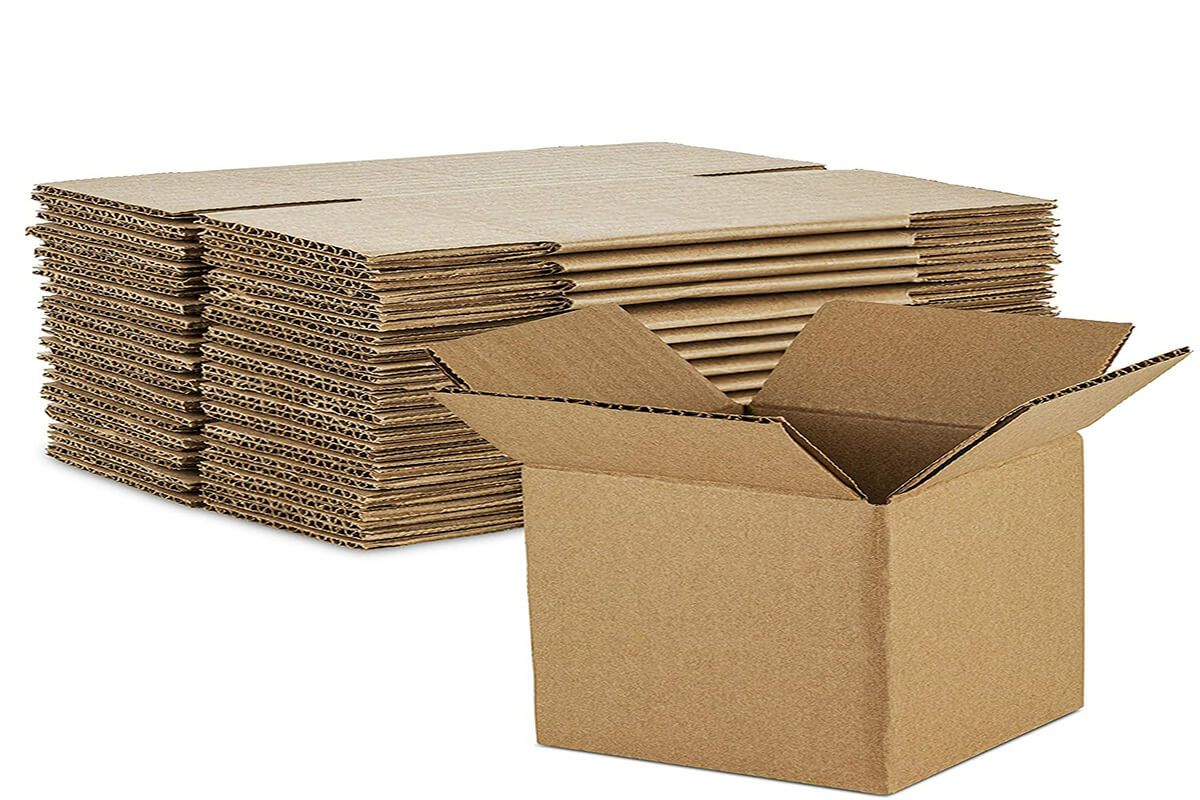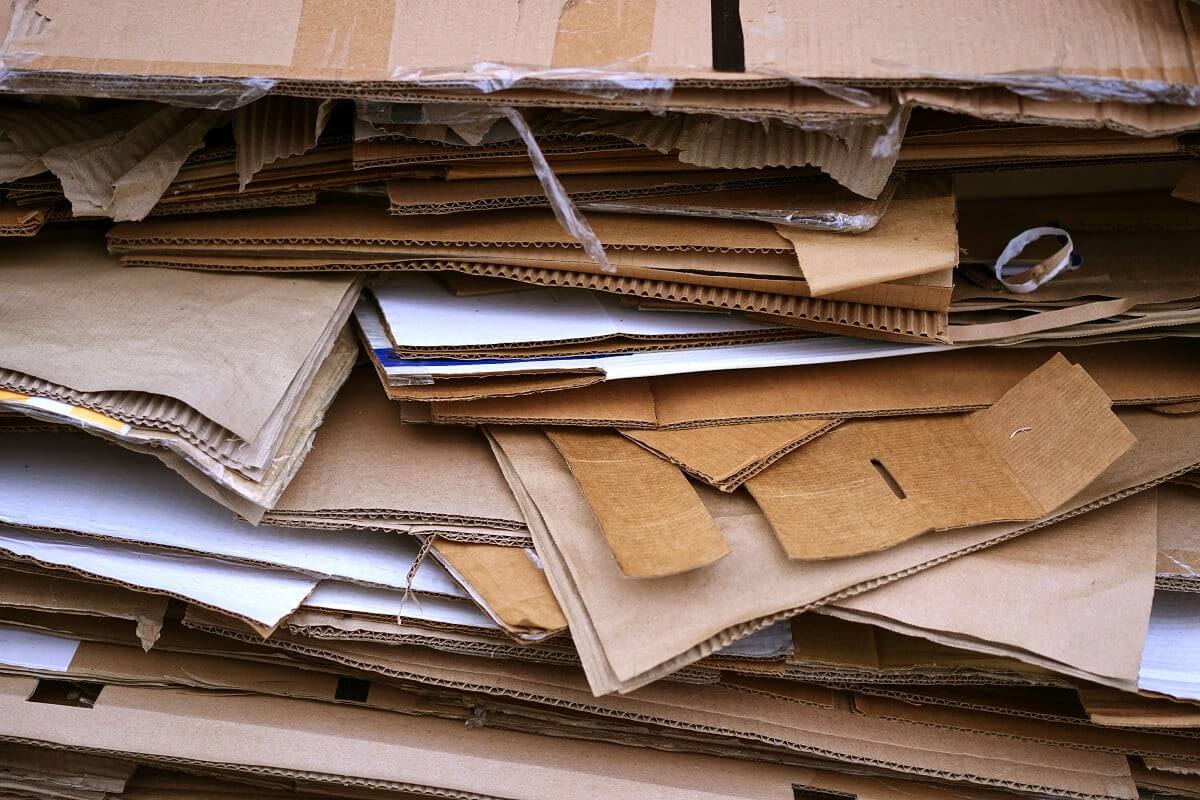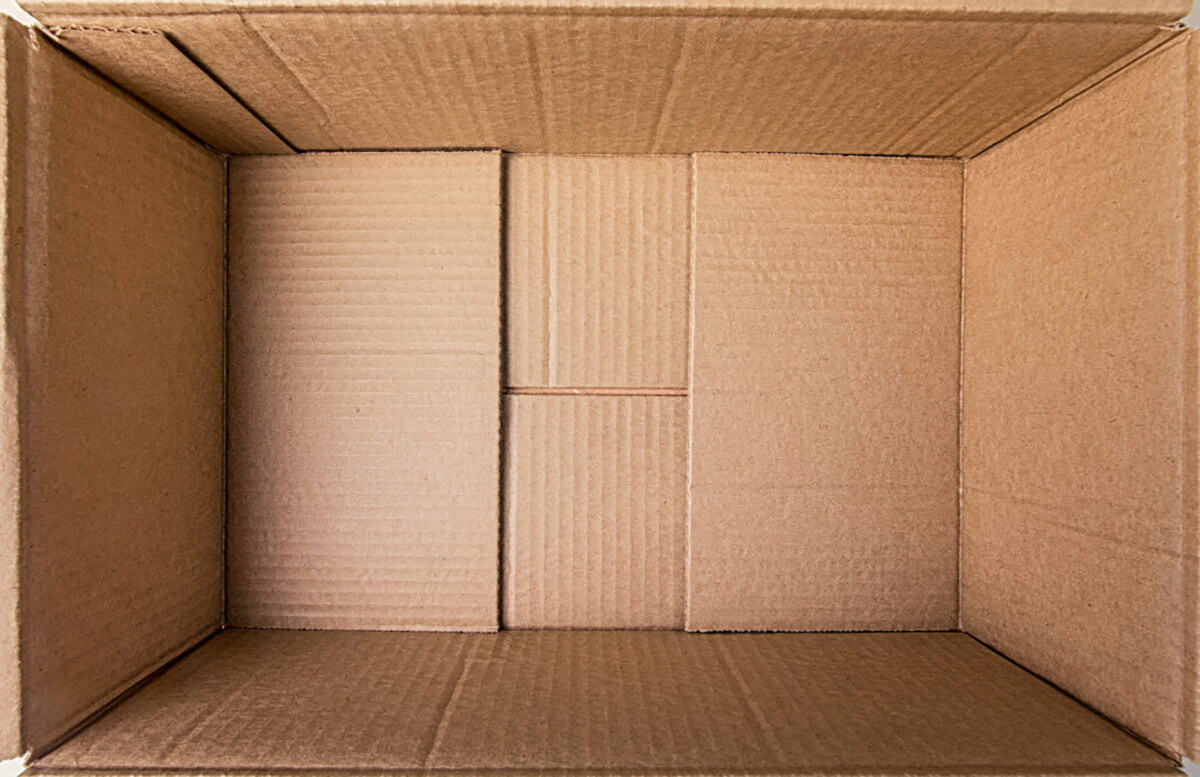Plastic is our least preferred type of packaging as it has terrible consequences on the environment and endangers our health. Cardboard is easily accessible and regularly considered an eco-friendly alternative. It comes from a renewable source; it is biodegradable, recyclable, and isn’t full of harmful chemicals like plastic. But, like most things, cardboard is not without a few issues of its own, and we’ll look at cardboard’s environmental impact in this article.
1. Why do we love cardboard
Cardboard is made from paper but is much thicker and sturdier than regular writing or printing paper. We widely use cardboard boxes for packaging food and clothing and shipping larger, delicate items. Cardboard comes in varying thicknesses and structures. The most evident distinction between the different types of cardboard is corrugated cardboard and chip or paper board.
The structural design of corrugated cardboard makes it strong and durable. Most of the time, we use corrugated boxes for shipping goods (they are made from a specific corrugated box machine)—about 90% of all products in the United States ship in cardboard.
Chip or paperboard are your cereal boxes, pizza boxes, and packages of lightweight goods transported over a short distance. Egg cartons, shoe boxes, and gift boxes are also usually made from cardboard.

1) Recycled and recyclable
The U.S. recovers about 70% of all corrugated cardboard boxes for recycling; it makes up the bulk of paper recycling. In 2018, the U.S. recycled 46 million tons of paper and cardboard, which was the highest recycled material that year.
The Carton Federation of France says that the country recycles 93.5% of its corrugated cardboard waste. In France, 80% of the materials for corrugated cardboard come from recycled paper, and another 14% are sawmill by-products, like sawdust and woodchips. Many other manufacturers across the globe use recycled materials for cardboard cartons too.
2) Non-toxic production
Cardboard boxes and shipping cartons are usually processed without bleach because they don’t need to be pristine white. According to the New York Department of Environmental Conservation, over 97% of corrugated cardboard boxes have non-toxic water-based printing.
3) Renewable raw material
Trees are renewable. Plastic packaging depends on fossil fuels for raw materials, and oil is a non-renewable natural resource. Cardboard, on the other hand, depends on wood pulp from trees.
Of course, there is the problem of overusing forest resources. Organizations like The Forest Stewardship Council (FSC) and the Program for the Endorsement of Forest Certification (PEFC) exist to check forest degradation due to logging.
4) Small carbon footprint
Trees sequester carbon dioxide. The paper manufacturing industry is also one of the lowest greenhouse gas emitters. In 2017, the industry contributed just 0.8% to global emissions.
Plastic, on the other hand, was responsible for 4.5% of global emissions in 2015. In its entire life cycle, one ton of corrugated cardboard generates 538 kg of carbon equivalent emissions.
5) Biodegradable
Cardboard is biodegradable and can be used as compost material. So when you have a piece of cardboard that is not recyclable or reusable, you can compost it. Unlike plastic, it won’t break down after 100 years into toxic microfibers.
Under the right circumstances, cardboard will completely break down into organic matter within two months unless coated with wax, which doesn’t stop biodegradation but slows it down. So it takes years instead of a couple of months.

2. Negative environmental effects of cardboard
Cardboard is great in many ways, but some unsavory truths exist about its production and consumption.
1) Deforestation
To make cardboard, manufacturers need wood pulp, and that requires cutting down trees. Most people are quick to point out that we plant trees, so the raw material is from a renewable source. But that assumes that all cardboard boxes come from sustainable forests where they continually plant new trees to replace the ones cut down.
If that were the case, regulatory bodies like the FSC wouldn’t have to exist. According to a recent Greenpeace report, the FSC is struggling to keep companies in line. As we know, when forest resources are consumed faster than we can replace them, it affects wildlife too. These animals lose their habitat, become endangered, and are vulnerable to extinction.
2) Landfill waste
Cardboard boxes are recyclable or at least compostable and are sometimes reusable. However, some people simply trash all the cardboard packaging they receive and other household waste. In 2018, 67.7 million tons of paper and cardboard ended up in the United States solid waste stream.
Landfill space is very important to waste management, and the space for it is supposed to be limited. But if avoidable waste keeps piling up in landfills, we will run out of space. Landfills are not only an eye sore but highly polluting; we certainly don’t want more of them.
3) Greenhouse gas emissions from disposal
One positive thing about cardboard is that it is biodegradable, but letting it decompose should be a last resort. That’s because as it decays, it releases methane. Methane is one of the top greenhouse gasses causing the atmosphere to heat up.
We can find these products almost anywhere in the world, but cardboard recycling facilities are not as common. Even where we have recycling plants, cardboard boxes contaminated with oil and grease can not be recycled (like pizza boxes). When thrown in the trash, cardboard contributes significantly to global warming.
4) Greenhouse gas from transportation
In terms of weight, plastic is lighter than cardboard. A standard corrugated box weighs 0.7 pounds, but a plastic bubble mailer of the same size would weigh 0.05 pounds. Companies that manufacture plastics claim the weight difference affects the carbon footprint of both materials. The bulkiness and weight of cardboard boxes mean they cost more to transport. It would take more fuel and transport cardboard, creating higher vehicle carbon emissions.

3. How to reduce the negative environmental effects of cardboard
Cardboard has many advantages over plastic, but its few disadvantages come from single usage. Single-use cardboard packages result in avoidable waste that harms the environment. You can reduce waste by reusing or recycling cardboard.
1) Reuse cardboard
Cardboard is a choice material for many arts and crafts projects. You can make toys, collages, fantasy pins storage boards, or paper mache projects. You can also cut cardboard into small pieces, paint them, and use them as cup coasters or furniture sliders. If you are not up for anything artsy, you can simply use your old cardboard packaging as storage boxes or as boxes for your zero-waste gifts.
2) Cardboard recycling
Recycling facilities recycle corrugated cardboard differently from other types of cardboard. So you’ll need to put them in separate bins or bags. Make sure to flatten each cardboard box before putting it into the recycling bin.
Oil-soaked, greasy, or wet cardboard is not recyclable, so you’ll have to be careful to keep your boxes recyclable. Any cardboard going to the recycling center must be free of food and other contaminants. You’ll also need to remove all plastic tapes or tags to avoid contaminating the recycling process.
4. Why reusing or recycling cardboard is important
Recycled cardboard is used to reproduce more paper products, including new cardboard boxes, tissues, towels, and printing paper. As the recycling facts show, for decades, people have been recycling cardboard, and with growing usage and environmental pressures, it’s more important than ever to recycle cardboard. Below are a few reasons why cardboard recycling is essential for the environment and economy.
1) Conserves trees
Cardboard packaging can be recycled and made into new packaging up to 7 times. Then when its fibers become too short, they mix with other materials to produce newsprint or gift wrappers. Recycling cardboard reduces the need for virgin raw materials; new trees don’t have to be cut down. Recycling one ton of paper saves 17 trees.
2) Saves water and energy
But trees are not the only natural resources that cardboard recycling conserves, and it reduces water and energy consumption too. The manufacturing process of recycled feedstock uses only 75% of the energy used to manufacture virgin pulp corrugated cardboard. Manufacturing 2000 pounds of recycled paper reduces water use by 58%.
3) Better for the atmosphere
When you recycle cardboard instead of throwing it away, you help eliminate the greenhouse gas it might have generated otherwise. When cardboard isn’t recycled, it ends up in the landfill, where it decays, or it ends up in an incinerator. In both situations, harmful amounts of greenhouse gases are released into the atmosphere—one ton of recycled paper results in 60 pounds less air pollution.
4) Saves Landfill space
Cardboard recycling also helps us conserve valuable landfill space, which is essential for waste management. Just one ton of recycled cardboard saves 3.3 cubic yards of landfill area.
5) Source of revenue
Recycling cardboard goes beyond waste reduction; it is an important contributor to the economy. The global paper recycling market was estimated to be around $45.5 Billion in 2020. There are companies established just for recycling cardboard and paper products. When you recycle cardboard, you keep these companies in business, and they can employ millions of people.

5. Conclusion
Cardboards require considerable natural resources, and the only way to make that truly count is through reusing and recycling. So rather than carelessly tossing paper packaging materials away, choose to recycle cardboard. You can find a recycling center near you through an online search if curbside recycling is unavailable in your area.
